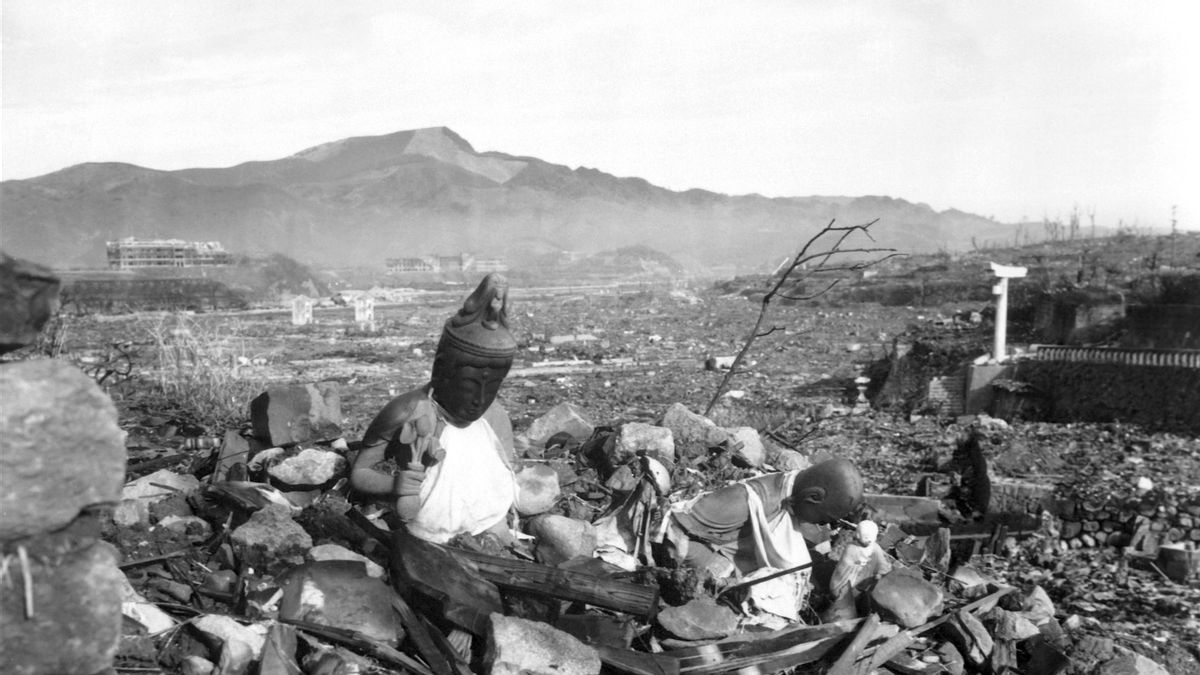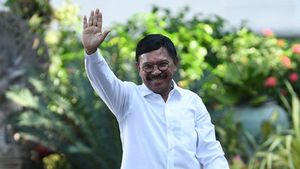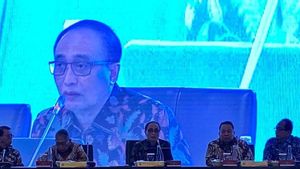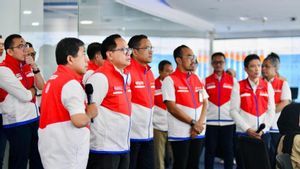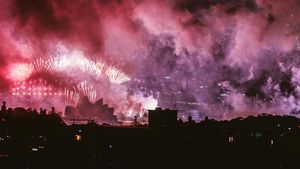JAKARTA - On August 9th 1945, an American B-29 dropped an atomic bomb on the city of Nagasaki, Japan. 74 thousand people died as a result of the incident, mostly civilians. Miraculously, there were still people who could escape the deadly explosion. But how?
Not many people know how Nagasaki is doing after being bombarded. Most people only know the incident as the second explosion after Hiroshima. Only a handful of people know how was the struggle of "hibakusha". It's a term for people who survived the incident.
In her book “Nagasaki: Life After Nuclear War”, Susan Southard captures the lives of several hibakusha. She also explained how later they continued their happy lives.
Before exploring how the Hibakushas survived the atomic bombing, Southard explained things in his interview with National Geographic that might be contrary to popular opinion. One of them is about the bomb that didn't explode on the ground, but rather about a third of a mile above the ground. So the explosive power would be maximum and the heat would range to almost the entire city.
The area beneath the explosion is called the "hypocenter". It was known to reach 5,000 to 7,000 degrees Fahrenheit. For a considerable distance, the explosion destroyed buildings and trees. It was an unimaginable blinking rate of destruction.

Hibakusha
One of the people who escaped the death was a Letter Deliverer, Sumiteru Taniguchi. He was 16 years old when the incident happened. Towards the explosion, he was sending a letter on his bicycle.
Taniguchi was about a mile apart from the explosion. When the bomb exploded, he was thrown off his bicycle.
Taniguchi was one exception among the many people who could no longer open their eyes after the explosion. He immediately got up and collected the scattered letters. Because he was still in a daze, he didn't realize that his back, arms, and legs had been badly burned.
Then Taniguchi realized that all the children who had been playing with him before the explosion had sprawled. With his weakened body condition, he then fled to a factory.
Several people then moved him to the hillside. He laid there for two nights unconscious. Until then, his grandfather found Taniguchi.
There were no hospitals and medical supplies in Nagasaki. So, Taniguchi was taken to a village outside the city. He was treated normally for three months until finally taken to the naval hospital in Omura, which was 22 miles from Nagasaki. Only then he received proper medical treatment.
Taniguchi had to lie on his stomach for three years. He couldn't lie on his side, let alone on his back, because of the burns. So, someone could see his internal organs including his heartbeat.
Taniguchi was released from the hospital in 1949 when he was 20 years old. He then continued his life as an anti-nuclear activist until his death on August 30, 2017.

Saved by the Mountain
Besides Taniguchi, one of the living witnesses of the Nagasaki explosion was Reiko. She became one of the people who managed to survive without injury because she was protected by Mount Konpira. She experienced that powerful explosion at the age of nine.
That day, the air raid warning bells were ringing more frequently. Therefore schools were closed.
After the situation looked safe, Reiko decided to go to a nearby shrine to study. About 40 minutes of studying, she then returned to her home.
"I made it to the entrance to my house, and I thought about I stepping inside," Reiko was quoted by the BBC. The incident happened so suddenly.
"A blinding light flashed across my eyes. It was yellow, khaki, and orange, all mixed," said Reiko trying to describe the incident.
"I didn't even have time to wonder what it was ... In no time, everything turned white. It was like being left alone. The next moment, there was a loud roar. Then I passed out."
When she regained consciousness, Reiko immediately remembered her teacher's taught her on what to do in the event of an explosion: go to the shelter. She and her mother then walked there.
"I didn't have a single scratch. I have been saved by Mount Konpira. But it was different for the people on the other side of the mountain. They are in terrible conditions," said Reiko.
They Didn't Die Like Humans
Reiko described many people from across Mount Konpira who fled to the area. "People with sticking eyes, disheveled hair, almost all of them naked, badly burned with loose skin," she said.
Her mother, along with other women in their community, helped the wounded. Herded them into a nearby college auditorium where they could lie down.
The victims were thirsty. Almost everyone begged for water. Reiko helps people to fetch water from a nearby river.
"After drinking a sip of water, they died. People died one by one," said Reiko.
The bodies of those who died were piled up. The bodies were then collected in a swimming pool on campus and cremated with used wood.
"It was impossible to know who those people were. They didn't die like humans," said Reiko.
The English, Chinese, Japanese, Arabic, and French versions are automatically generated by the AI. So there may still be inaccuracies in translating, please always see Indonesian as our main language. (system supported by DigitalSiber.id)
